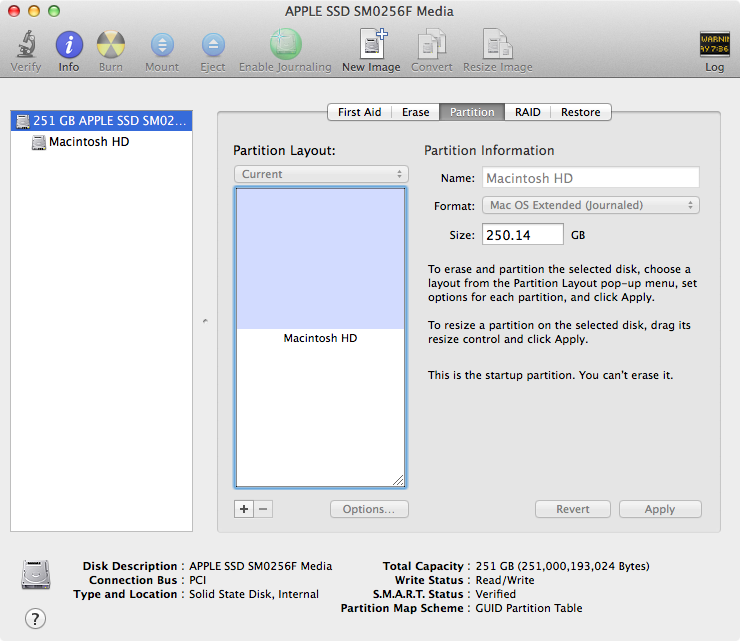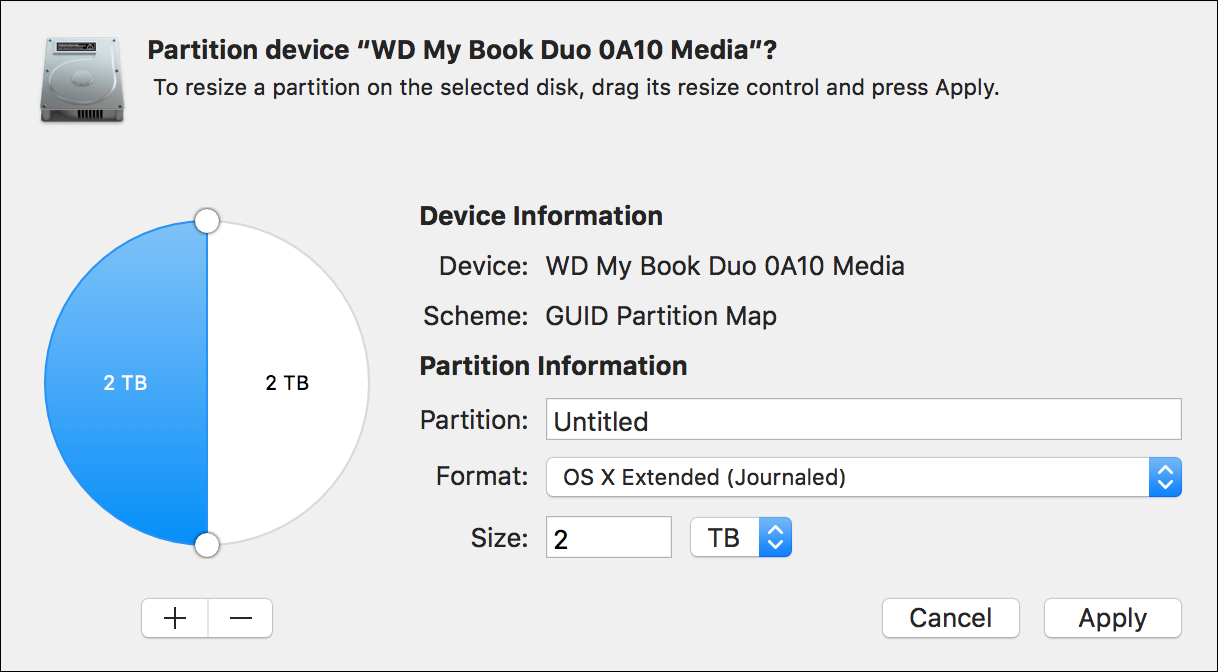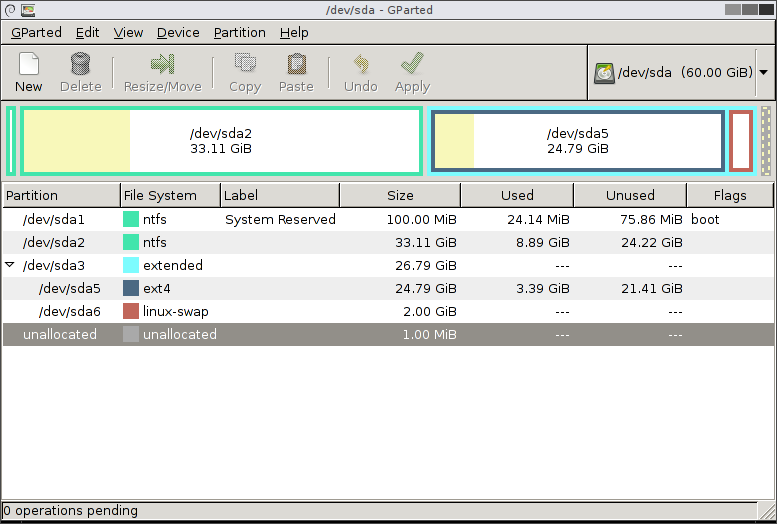Resize Partition on Mac with Disk Utility. Mac Disk Utility is a powerful built-in application in Mac OS that has undergone a series of changes with every major OS update. Many Mac users have complained that using Mac Disk Utility to resize a Mac Volume is no longer easy. However, being an experienced Mac expert, we feel its interface is user.
Partitioning a disk on a Mac is an effective way to organize your data into different categories. However, the main concern is that most external hard drives and USB keys come formatted for Windows, which is primarily for PCs. By default, a Mac runs a different file system, so it may bring issues while partitioning your disk on Disk Utility.
- With other applications or Disk Utility, you can be able to view the hidden partition, however, cannot select or mount it. Can I resize Windows partition on Mac hard disk drive? Yes, you can now resize Boot Camp partition and Macintosh hard drive with the latest version of Stellar Partition Manager software i.e.
- Fix 'Mac Disk Utility Partition Greyed Out' Sometimes, when the users are performing merging or resizing operations, the Disk Utility grays out and stop responding. As a result, you will be unable to resize or merge partition on Mac. Thus, you will need to resolve this issue as soon as possible. The main reasons for this problem are.
- Nov 15, 2015 I'm attempting to partition a 500gb external HDD to run bootcamp, but whenever I go into Disk Utility, the option to partition the drive is greyed out. I've previously erased and formatted to Mac OS X Journaled, so there's nothing on it, but still the partition option isn't available (see screenshot). Any help is majorly appreciated.
Hard drive partitioning is a common issue discussed in many tech forums. In a thread on Apple’s support forum, users complain that their Mac Disk Utility partition grayed-out while trying to partition their external hard drives.
Probably, you just bought your external hard drive and are eager to use it on your Mac. But somehow, you cannot access the Mac Disk Utility partition, so you can’t write data to the drive.
Fear not, we have a solution to this problem. In this post, we will guide you through a step-by-step process on how to restore a grayed-out Disk Utility partition. Many Apple users who have faced Partition grayed out in Mac issues eventually partitioned their external hard drives with the help of these fixes.

Why Partition Grayed Out in Mac (Plus Solution)
Problem 1: Sometimes, you cannot access the Mac Disk Utility partition because your hard drive doesn’t have sufficient space.
Solution: If you want to go ahead with the partitioning task, you need to create more space on your hard drive. In other words, you have to erase the data on your drive to create additional space. You can then format your hard drive using GUID Partition Table. After that, go ahead with your partitioning plans.
Important Note: Before formatting your hard drive, back up your most important files. Needless to say, the process will get rid of all the data on the disk, so you risk losing your files for good.
Problem 2: As mentioned earlier, external drives are usually not compatible with macOS, which may bring issues when you want to partition. In most cases, users choose the wrong partitioning option, and as a result, the Partition option in Disk Utility remains grayed out.
Solution: The right way you should follow when selecting a partition option is to choose the drive name within the list provided under Internal or External (depending on the device you want to partition). Your hard drive will be available on the left side of the Disk Utility pane.
How to Restore Grayed Out Disk Utility Partition: Format Your Hard Drive to Work with Mac
To format your external disk to be compatible with macOS, connect your hard drive to the Mac and follow these steps:
- Open Disk Utility by going to Applications, then select Utilities > Disk Utility.
- Choose the drive name within the list provided under ‘External’. If your hard drive is connected, it will show in the left panel of the Disk Utility. Highlight the disk and click the Erase button in the top toolbar.
- Wait for a window asking you to select the file system you want to use to format your external drive to pop up. For your case, you will select ‘Mac OS Extended (Journaled)’. But if you have plans to use your disk for both PC and Mac, then a better option is ‘ExFAT’. You can also rename your hard disk here to your desired name.
- Wait for the formatting process to complete. The process usually takes less than a minute, but it depends on the size of your hard disk.
- When done, confirm if the formatting was successful by right-clicking the icon for your disk on the desktop and then choosing Get Info. The information is available under Format.
If it reads “Mac OS Extended (Journaled)”, congratulations, you successfully restored the grayed-out Disk Utility and your hard disk is now compatible with macOS.
Partitioning Your Hard Drive on Mac
Now that you have prepared your hard drive to work with Mac, the next step is to partition it on your Mac by following these steps:
- Launch the Disk Utility app on your Mac and highlight the hard drive icon under ‘External’ (for external hard drives). If you choose any other drive, the partition option will become unclickable.
- Now click Partition on the top toolbar. A window that has partition information will pop up. On the left side of the window, look for the name and the volume size of your hard drive. The next step is to click add(+) button on the bottom of the window to create partitions on your disk. Allocate the desired volume size to each partition.
- Hit the Apply button and wait for a window asking you to verify your choices. Confirm the changes by clicking the Partition button.
- Wait for the process to complete. You can confirm if the process was successful on your desktop. You will see additional disk icons show
Pro Tip: If the main reason for partitioning your hard drive is to install Windows, Apple recommends that you use Boot Camp Assistant instead of Disk Utility. You should, however, note that you cannot use Disk Utility to erase a partition generated using Boot Camp Assistant.
What Else Can You Do to Resolve Common Mac Issues
If you are like many users, partitioning a hard drive on Mac may not be the only challenge you have had with your computer. Mac users have also reported slow performance, random freezes, and space issues. The best way to guarantee the best performance for your Mac is to scan and clean the computer. Outbyte MacRepair helps you to optimize your Mac for peak performance by checking for and cleaning up junk files, unnecessary apps, and other space hogs that may affect your Mac’s memory.
We hope the above solutions helped you to restore the grayed-out Disk Utility partition. As always, we would love to hear your success story. Share it in the comment section. Also, let us know if you experienced challenges during the partitioning process.
See more information about Outbyte and uninstall instructions. Please review EULA and Privacy Policy.
/Mac Tips /How to Delete A Hard Drive Partition on Mac?
A lot of people would want to learn how to partition a hard drive on their Mac computers or Windows PCs. However, how about the opposite? Some people might also wish to know how to unpartition a hard drive on Mac or Windows.
In this article, we will be focusing on how to remove partitions on your drive on Mac computers. Before we start into the entire guide, you have to take note that manipulating any drive, including that of unpartitioning them, is a type of process that involves removing data included on the drive.
Thus, it is best for you to check out what you’re doing on each step of this guide. Ensure that important data are backed up before you remove the partitions on your drive on Mac. In this way, you don’t lose important data such as work documents and other sensitive information.
Article GuidePart 1: Steps on How to Unpartition A Hard Drive on MacPart 2: To Wrap It All Up
People Also Read:How to Fix External Hard Drive Not Showing Up on Mac?Guide on How to Clone Mac Hard Drive to SSD
Part 1: Steps on How to Unpartition A Hard Drive on Mac
Below are the steps you should follow in order to remove partitions on your disk drive on Mac. We will be using the Disk Utility tool for this guide.
Step 1: Open Disk Utility
You can launch Disk Utility on your Mac computer by visiting /Application/Utilities. Or, you can also use the Spotlight in order to do so. Once it is opened, you can go to the left sidebar in order to view all connected drives including their subpartitions. The major pane located at the right side shows a variety of info regarding the drive you have currently selected.

Step 2: Locate the Disk You Wish to Edit
In order to find the drive you want to edit, you must look in the sidebar located on the left-hand side. If your drive is not located there, make sure it is working properly. Also, ensure that it is connected to a particular power source.
Also, you have to make sure that the drive is actually plugged into a port that is compatible. If you can, you can disconnect the drive and then reconnect it when necessary. If a particular drive doesn’t appear within the sidebar of Disk Utility, the tool won’t be able to edit it. If the drive you wish to edit is colored grey, you should select this drive and then press the button for “Mount”. The said button is located within the top bar.
Step 3: Select the Disk You Wish to Format
Now, select the particular disk you wish to format within the tool’s sidebar. Do not select any of its sub partitions. Ensure that the information regarding the drive is shown in the pane on the right side. Any particular change you make within the main pane will then be applied to the selected disk within the sidebar. Thus, ensure that you have selected the right disk before you start the next steps.
Step 4: Press The “Partition” Button
The “Partition” button is located within the top menu bar. Now, a lot of options will be displayed. It will also display your drive’s current partition map. The partitions of the selected disk will be shown in the form of a pie chart. It goes within that of a clockwise position with regards to physical position within the disk.

Step 5: Remove A Partition
In order to remove a particular partition, you have to select it first. You can do this by pressing its part within the pie chart. Then, press the minus (-) icon that will appear under the pie. You can remove multiple partitions simultaneously if you wish. Now, you’re one step closer to finishing the process on how to unpartition a hard drive (Mac).
It is important to remember that you can remove a lot of partitions if you wish. However, there are some rules for doing this process. For instance, the first partition within a particular disk always “cannot” be removed. This first partition can only be reformatted or resized.
In addition, the first and foremost partition cannot be removed or deleted as well. This is because it has the Partition Scheme. However, it must be noted that this first partition won’t be visible or editable using Disk Utility. Thus, you need not worry about deleting this partition.
Partition Magic
If you wish to change the very first disk partition, it is necessary for you to reformat the entire disk to that of a new Partition Scheme. This will delete all partitions contained within the reformatted disk. When you delete a partition located at the end part of the disk, it will usually cause the partition found before it to automatically grow in order to fit the deleted partition’s previous space.
This is true, unless, you have added an alternative partition to be located in the previously-deleted one. Obviously, partitions that have been removed or even reformatted will lose all the data contained within it.
Step 6: Press the Apply Button

When you have finished removing all the partitions that you like, then you can simply press the “Apply” icon in order to save your changes. A confirmation window will be displayed. This will show you the removals, resizes, and additions you have done to your disk.
Make sure that you have read the confirmation window carefully. In this way, you can make sure you’re not deleting another partition by mistake. After this, press the Partition button again in order to confirm that you want to make the changes.
Step 7: Finish Every Single Thing Up
Now, you have finished the process on how to unpartition a hard drive (Mac). You should unmount and then remount the drive in order for the new partitions to appear. Adding and removing partitions can actually be tricky. This is true if you’re working with a different format of files and logical volumes.
Part 2: To Wrap It All Up
In this article, we’ve taught you how to unpartition a hard drive (Mac). Removing partitions on your Mac can be very easy especially if you’ve followed our guide above. The steps are very clear and easy to understand.
How about you? Do you use a tool other than the Disk Utility to unpartition a hard drive on Mac? If so, what tool do you use and how do you do it? We’d love to hear your thoughts below. Simply type into our comments section to be heard.
ExcellentThanks for your rating.

Rating: 4.6 / 5 (based on 89 ratings)
People Also Read:
PowerMyMac
A powerful all-in-one App for Mac
Bootable Disk Partition Utility
Free DownloadThe most powerful and useful 16-in-1 Mac Software in 2019
Free Download